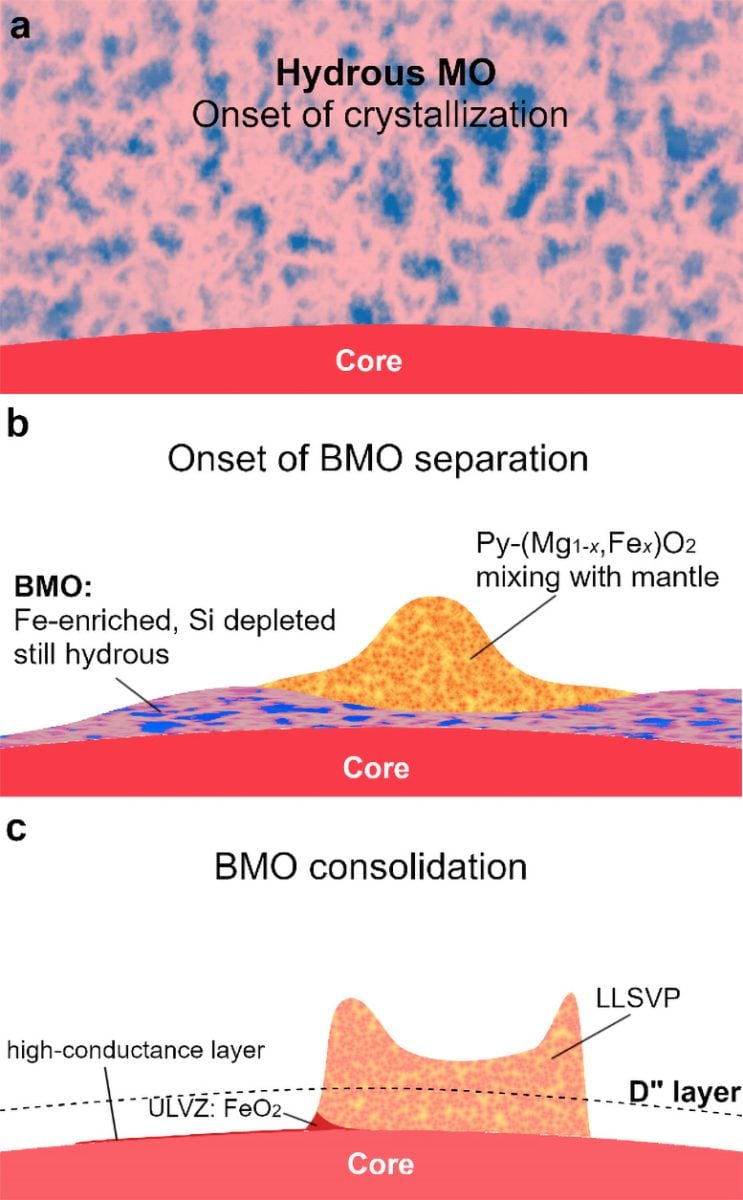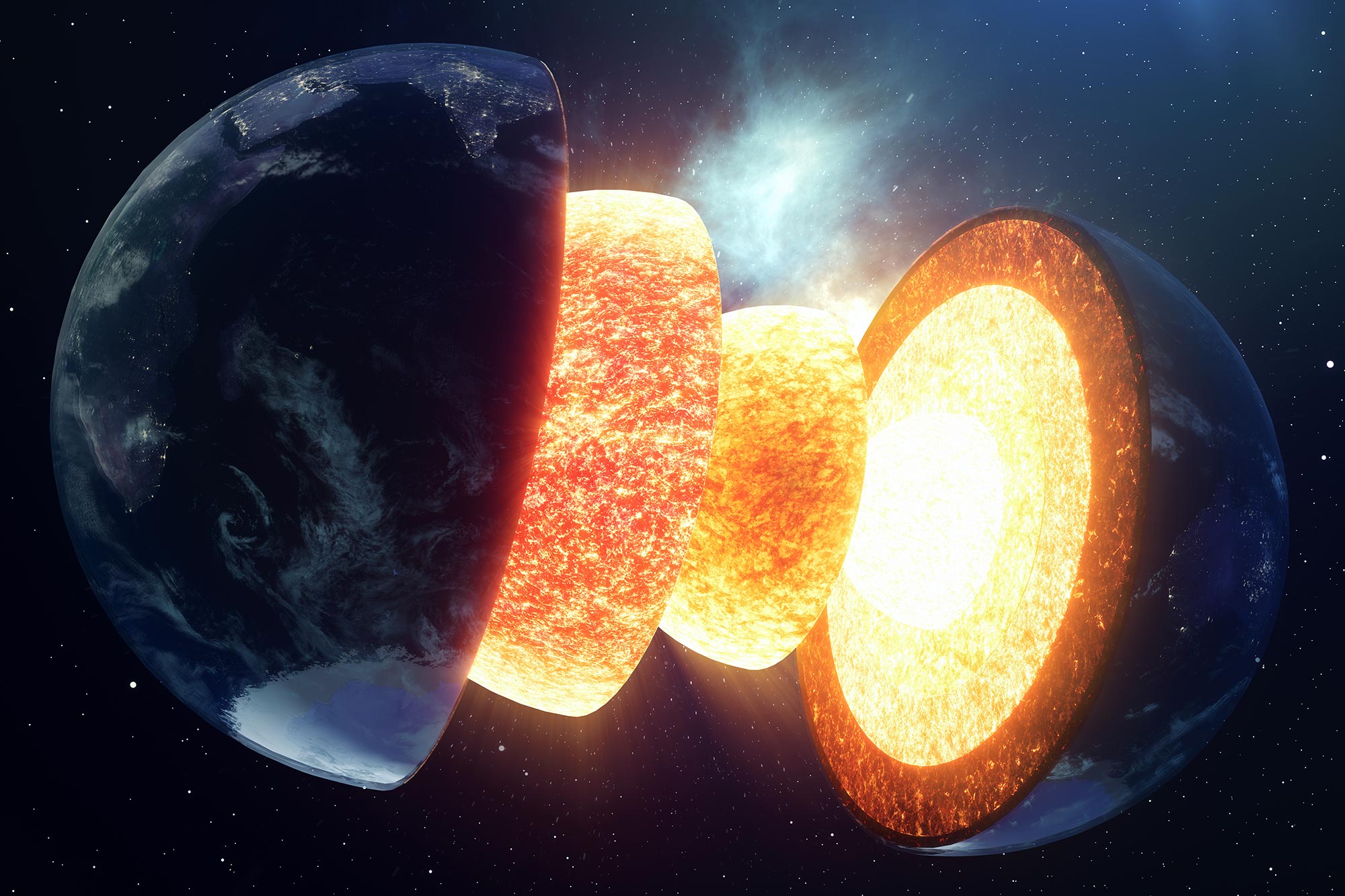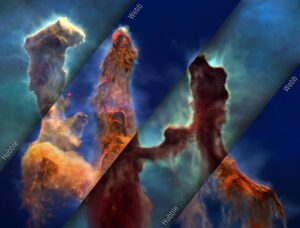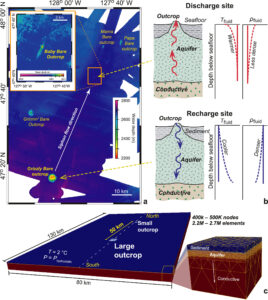A study suggests that Earth’s D layer, near the core-mantle boundary, formed from a magma ocean created by a massive impact. Iron-magnesium peroxide formed from water in this ocean explains the unique composition and heterogeneity of the D layer.
New research suggests that the mysterious D” layer at the boundary between Earth’s core and mantle may have formed from the remnants of an early colossal impact, with iron-rich peroxide playing a key role in its unique and enduring characteristics.
Deep within the Earth lies a mysterious layer called the D layer. Located approximately 3,000 kilometers down, this zone sits just above the boundary between the planet’s molten outer core and its solid mantle. Unlike a perfect sphere, the D” layer is surprisingly uneven. Its thickness varies greatly from place to place, with some regions even lacking a D” layer at all – similar to the continents that rise above Earth’s oceans. These intriguing variations have attracted the attention of geophysicists, who describe the D layer as a heterogeneous or inhomogeneous region.
A new study led by Dr. Qingyang Hu (Center for Advanced Research in High Pressure Science and Technology) and Dr. Jie Deng (Princeton University) suggests that the D” layer may date back to Earth’s earliest days. Their theory is based on the giant impact hypothesis, which proposes a MarsA -sized object crashed into proto-Earth, creating an ocean of magma for the entire planet in its wake. They believe the D” layer may be a unique composition left over from this colossal impact, potentially holding clues to Earth’s formation.
Water in the magma ocean
Dr. Jie Deng emphasizes the presence of a significant amount of water in this global magma ocean. The exact origin of this water remains a matter of debate, with various theories proposed, including its formation by reactions between the nebula and magma or direct delivery by comets. “The prevailing view,” continues Dr. Deng, “suggests that water would have concentrated toward the bottom of the magma ocean as it cooled. In the final stages, the magma closest to the core may contain volumes of water comparable to Earth’s oceans today.
The extreme pressure and temperature conditions in the bottom magma ocean would create a unique chemical environment promoting unexpected reactions between water and minerals. Dr. Qingyang Hu explains, “Our research suggests that this aqueous magma ocean favors the formation of an iron-rich phase called iron-magnesium peroxide.” This peroxide, with the formula (Fe, Mg)O2, has an even stronger preference for iron compared to other major components expected in the lower mantle. “According to our calculations, its affinity for iron may have led to the accumulation of iron-dominant peroxide in layers several to tens of kilometers thick.

Formation of a heterogeneous structure at the boundary between the Earth’s core and mantle. Credit: Science China Press
The presence of this iron-rich peroxide phase would alter the mineral composition of the D” layer, deviating from our current understanding. According to the new model, the minerals in D” will be dominated by a new group: iron-poor silicate, iron-rich (Fe, Mg) peroxide, and iron-poor (Fe, Mg) oxide. This dominant iron peroxide also possesses low seismic velocities and high electrical conductivity, making it a potential candidate to explain the unique geophysical features of the D layer. These features include ultra-low-velocity zones and high-conductivity layers, both of which contribute to the well-known compositional heterogeneity of the D layer.
“Our findings suggest that the iron-rich peroxide formed by the ancient water in the magma ocean played a crucial role in shaping the heterogeneous structures of the D layer,” Qingyang said. The strong affinity of this peroxide for iron creates a sharp density contrast between these iron-rich patches and the surrounding mantle. It essentially acts as an insulator, preventing them from mixing, and potentially explains the long-lived heterogeneity seen at the base of the lower mantle. Jie added, “This pattern is consistent with recent numerical modeling results, suggesting that the heterogeneity of the lowermost mantle may be a long-lived feature.”
Reference: “Earth’s Core-Mantle Boundary Formed by Crystallization of Aqueous Terrestrial Magma Ocean” By Qingyang Hu, Jie Deng, Yukai Zhuang, Zhenzhong Yang, and Rong Huang, 13 May 2024, National Science Review.
DOI: 10.1093/nsr/nwae169



